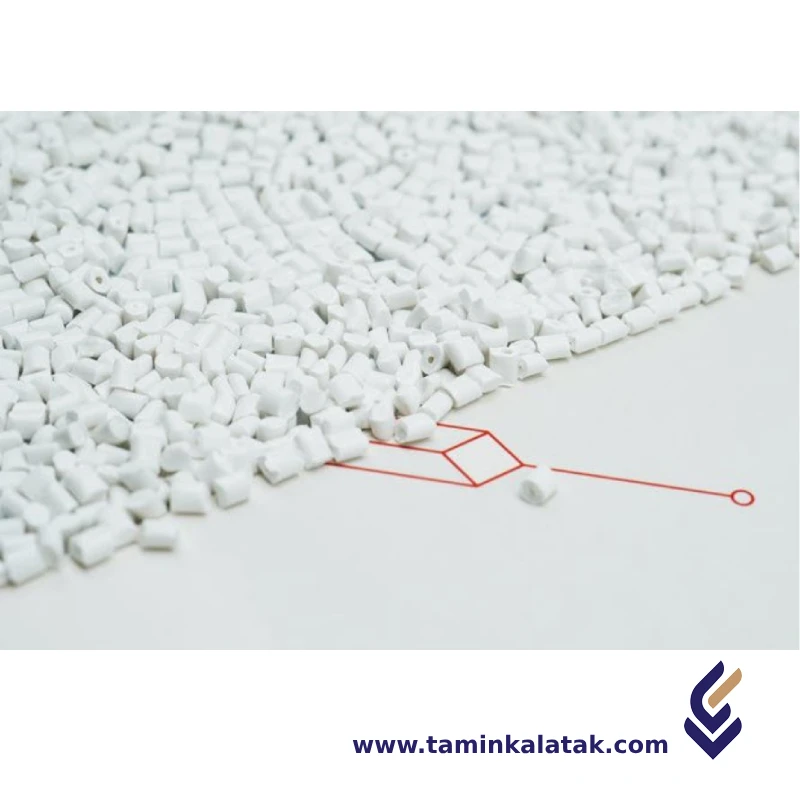Polymers are made up of very large molecules made up of many repeating units called monomers, which ultimately form this long polymer chain
A compound is a polymer blend mixed with additives, fillers, and reinforcements to achieve specific properties for end-use applications. A masterbatch is a concentrated mixture of additives or pigments in a carrier resin, used to enhance plastics without altering their base properties.
Flame Retardant Polypropylene Compounds
Flame Retardant Polypropylene (FR PP) compounds are specially formulated polypropylene materials designed to resist ignition and slow the spread of fire. These compounds are widely used in electrical, automotive, construction, and consumer goods industries where fire safety is crucial.
Structure
Flame Retardant Polypropylene (FR PP) compounds consist of a polypropylene base polymer combined with flame-retardant additives to enhance fire resistance. These additives can be halogenated, such as brominated or chlorinated compounds, or halogen-free, using phosphorus, nitrogen, or inorganic materials like aluminum hydroxide and magnesium hydroxide. The structure of FR PP compounds is carefully designed to balance flame resistance with mechanical properties, ensuring that the material retains its strength, impact resistance, and thermal stability while meeting fire safety standards. In halogenated systems, the flame retardant acts by releasing halogen radicals that interfere with combustion, while in halogen-free formulations, additives promote char formation, cooling effects, or dilution of combustible gases. The polymer matrix and additives must be well-dispersed to maintain processability, allowing the material to be used in various applications such as electrical enclosures, automotive components, and construction materials.
Properties
Flame Retardant Polypropylene (FR PP) compounds exhibit a combination of fire resistance, mechanical strength, thermal stability, and processability. These materials are designed to slow down ignition and flame spread, often meeting fire safety standards such as UL 94 V-0 or V-1 ratings. They maintain good impact resistance, stiffness, and durability, making them suitable for demanding applications. Depending on the formulation, halogen-free variants offer low smoke emission and reduced toxicity, making them environmentally friendly. The compounds also have good thermal stability, allowing them to withstand high temperatures without degradation. Additionally, they are easily processable using common manufacturing techniques like injection molding and extrusion, ensuring compatibility with large-scale production. Their balanced properties make them ideal for use in electrical, automotive, construction, and consumer goods industries where fire safety is a priority.
Applications
- Electrical and electronics: Cable insulation, connectors, enclosures, circuit breakers.
- Automotive: Battery casings, dashboards, under-the-hood components.
- Building and construction: Pipes, conduits, roofing sheets, insulation panels.
- Consumer goods: Household appliances, furniture, toys, and electronic housings.
- Industrial equipment: Machine housings, safety components, and ventilation systems.
Advantages
- High flame resistance, reducing fire hazards and meeting safety standards.
- Maintains good mechanical properties, including impact strength and stiffness.
- Offers thermal stability for high-temperature applications.
- Halogen-free options provide low smoke emission and reduced toxicity.
- Compatible with standard processing techniques like injection molding and extrusion.
- Lightweight compared to metal alternatives, improving design flexibility.
Disadvantages
- Some formulations may reduce mechanical properties like toughness and elongation.
- Halogenated flame retardants may pose environmental and health concerns.
- Can have higher costs compared to standard polypropylene.
- Certain flame retardant additives may affect recyclability and long-term stability.
- High loading levels of additives in halogen-free variants may impact processability.
Applications
| Applications | , , , , |
|---|
Flame Retardant Polypropylene Compounds
| Products | MFI (g/10 min) | Density (g/Cm3) | Process Method | Applications | Data Sheet | MSDS |
|---|---|---|---|---|---|---|
| Flame Retardant Polypropylene Compounds | 3-25 | 0.90-1.30 | Compounding (Material Preparation) Injection Molding Extrusion Blow Molding Thermoforming Rotational Molding | Cable insulation, switchgear housings, electrical connectors, enclosures Battery casings, dashboard components, under-the-hood parts, interior trim Pipes, conduits, insulation panels, and roofing materials Household appliances, furniture, electronic device housings Safety components, ventilation systems, machine housings |







